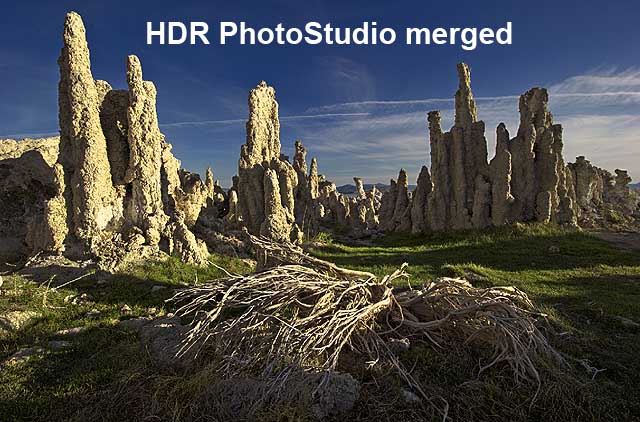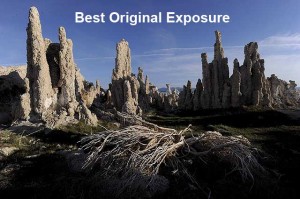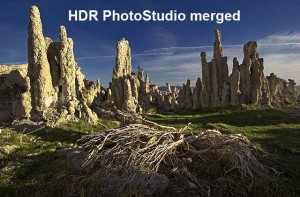As I’ve written before, I’ve been playing with some of the HDR (High Dynamic Range) software for the last year or so, and enjoying it. More and more, though I’m preferring finished photos that don’t look like HDR images. I’ll explain.
HDR is a process where you shoot the same scene (preferably on a tripod) at exposures above and below what the meter recommends (often times one or two stops each way). You then use software to merge those exposures into one final image that incorporates the best information from both the highlight and shadow areas. This has become popular as a way of getting around the limits of film or digital, where you can only capture about 6 stops of detail from brightest to darkest. Anything above or below that range will record as white or black. Using the multiple exposure HDR process you can go beyond that, which is more like the way the human visual system sees a scene. But that’s not how a lot of photographers are using the software.
Too often, HDR images turn into these overprocessed, unreal images. Too much contrast, saturation and sharpening. I’m not saying that this style is always wrong – there’s been some beautiful, unique work using these techniques. But what I’m seeing much less of is the use of HDR to take a beautiful scene and make it even better. To create an image that no one would identify as HDR, but is more powerful than any single exposure could be. That’s what I find to be the promise and future of HDR. The last couple of months I’ve been working more with HDR PhotoStudio, and after learning how to use it properly have really been enjoying the results.
As photo technology progresses, I think we’re going to see improvements in this type of software, as well as improvements inside the cameras themselves. Nikon’s giving us Active D-Lighting, Sony has their DRO Optimizer and Fuji is designing sensors with both large and small pixels designed to extend dynamic range. However we get there, an extended dynamic range is one of the Holy Grails of photography. I can’t wait!



